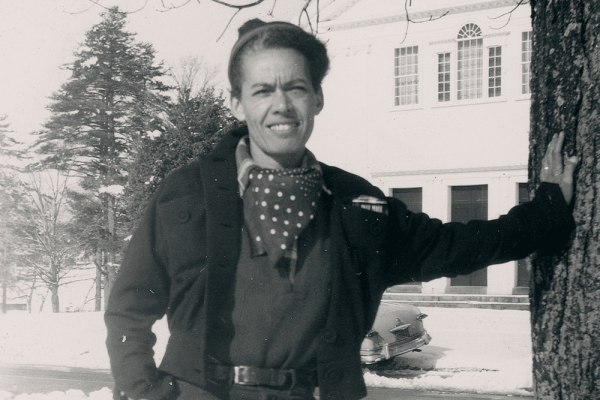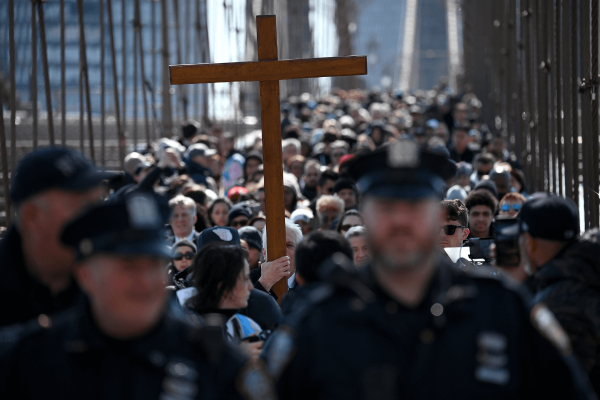Sanctuary is a disposition toward vulnerability and injustice that Jesus followers can trace back to the exodus in the Abrahamic tradition. This heritage of radical and risky welcome stitches its way through moments of truth for Jesus’ disciples. When individual congregations chose to serve as a stop on the Underground Railroad during slavery in the U.S., churches engaged in the risky business of sanctuary. And in the late twentieth century, churches responded to a humanitarian crises of thousands of Central American refugees fleeing violent conflicts, fueled — in many cases — by U.S. government policies. These churches created the 1980s Sanctuary Movement, born along the southern borders of the United States.
The current political climate and eruptions of anti-immigrant sentiment and violence have resurfaced a clarion call toward Christian dispositions of welcome. Jesus' followers are again invited to take risks in our welcome, to embody sanctuary in the way we make space for “the stranger,” the vulnerable, and those in need.
Since the 2016 presidential election, the number of churches officially “declaring sanctuary” has noticeably grown. Declaring sanctuary means a church is willing to house people, in the short or long term, to protect them from deportation. In Western North Carolina, churches who cannot or do not want to declare sanctuary can declare themselves as a “supporting sanctuary” church, pledging resources, people, and assistance to those churches who have declared sanctuary.
Noel Andersen, coordinator of Church World Service, explains:
“…Since Trump was elected in November, the number of churches in the United States expressing willingness to offer sanctuary has doubled to 800. …The faith community in general, after the election, was looking for what can we do to support the immigrant community.”
The challenge of the current Sanctuary Movement coalesces around our call as people of faith, albeit in some complicated ways. While the congregation I serve names and claims its orientation in the world as “progressive,” the invitation to declare sanctuary has given some pause. Many congregants (in a church of almost 700) are inclined to declare sanctuary, while others fear the legal and financial consequences of such a declaration in the current political climate. Their fear is that past practice of law enforcement allowing churches, schools, and hospitals to be safe havens will not hold under the current administration. The risk feels too great.
But while disappointing and confusing for some, the range of opinions toward the declaration of sanctuary has also created a constructive space at my church, and others. Such a pause is an opportunity to ask ourselves some questions even more difficult than whether or not we are collectively willing to break the law. We also must question our own readiness to embody what a “culture of sanctuary” holistically invites us to be.
I'm part of a local cross-cultural and cross-denominational clergy group that challenged the local Sanctuary movement in Western North Carolina to examine how whiteness and a culture of white supremacy can seep into the practices and perspectives of sanctuary, even among progressive people of faith. Engaging with such honesty has opened our eyes to the difficult work we have to do as Jesus followers in our own community. We have realized several things so far in this journey:
- Failure to embody Jesus’ radical welcome is not about partisan politics. Both political parties have failed to find solutions that have positively impacted the most vulnerable in our midst.
- The church has not been a consistent voice for change, and is divided against itself in how policy and piety meet in our common lives. We are complicit in the harmful conditions that exist for many people in our country today.
- Our whiteness has created both distortion and resistance when it comes to building mutual relationships with our neighbors who are immigrants, people of color, and economically insecure.
- Our ambivalence about radical welcome infiltrates our self-understanding. We have a hard time welcoming the stranger within ourselves or making room for idiosyncrasy, ambiguity, and dissonance within ourselves and with each other.
- "Either/or" reactions seem to be our default mode in times of stress, rather than "both/and" modes that create the conditions for radical welcome and transformation.
Jewish law held that the one who comes as a messenger for someone is legally standing in for the person who sent him or her. If contemporary Christians understand ourselves as messengers of Jesus’ healing promise, how well are we standing in for Jesus in today’s world?
The question is bigger than "What would Jesus do?" It's "How would Jesus be?"
The power of Christian welcome in our contemporary moment is that it rekindles our openness to Jesus’ transforming impact on the whole world — including on those of us who struggle to claim our shared vulnerability with those most impacted by systemic oppression and inequity.
Welcome as sanctuary is not simply about politics or piety. It is about power — the capacity to have an impact on the world around us and to be impacted by that same world. Matthew’s words reverberate with the promise of welcome for the church today when we open ourselves up to how Jesus himself meets us there.
Via ON Scripture.
Got something to say about what you're reading? We value your feedback!







